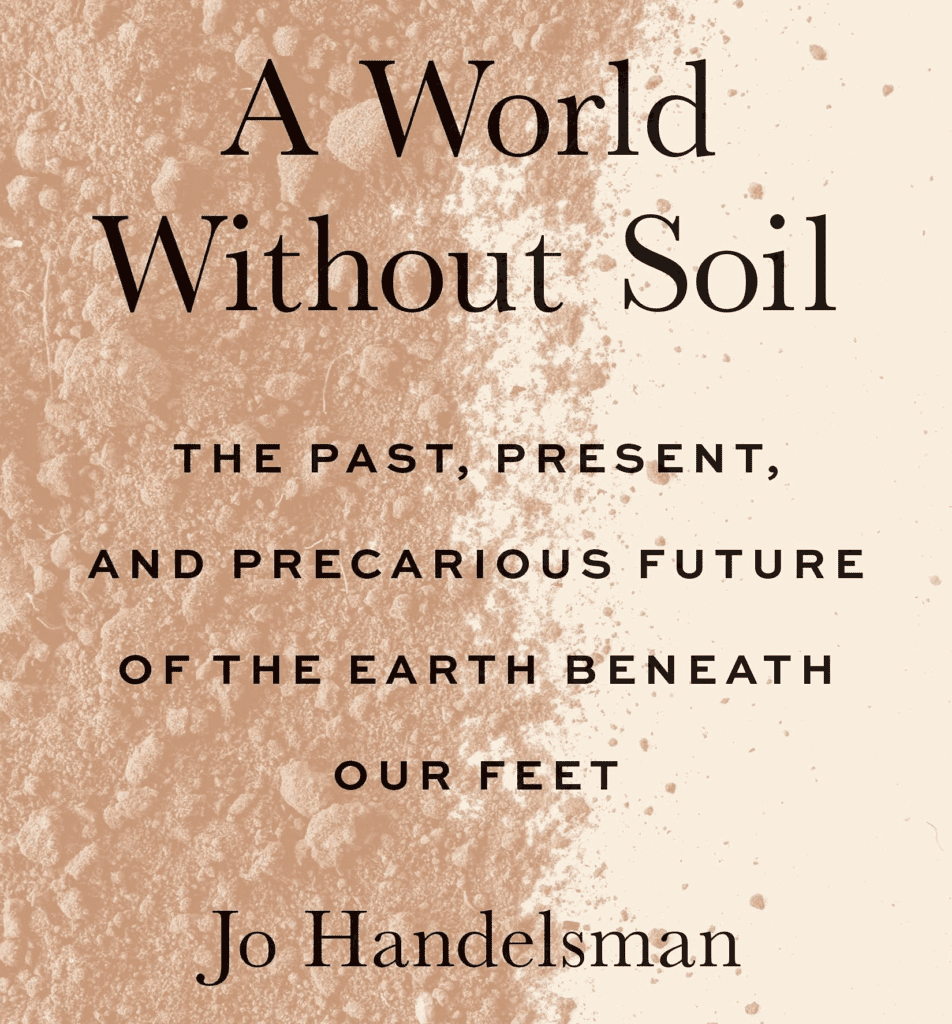There’s a dark ribbon that connects the entire planet. We don’t give it much thought, we take it for granted, but life as we know it simply couldn’t exist without it. I’m talking about soil. Soil is the foundation for pretty much everything we do — both figuratively and literally. Without soil to offer anchorage to plants, we couldn’t have agriculture and we couldn’t have society.
There’s a dark ribbon that connects the entire planet. We don’t give it much thought, we take it for granted, but life as we know it simply couldn’t exist without it. I’m talking about soil. Soil is the foundation for pretty much everything we do — both figuratively and literally. Without soil to offer anchorage to plants, we couldn’t have agriculture and we couldn’t have society.

by Jo Handelsman
Yale University Press // Buy on Amazon
The other environmental problem
We’re living in a time of environmental crises, and it’s likely not ending anytime soon. Sometimes, we see the problem very clearly (like with the plastic pollution we’re spewing out into the environment); other times, the problem is more difficult to see with the naked eye (like in the case of climate change). In the case of soil, it’s kind of a mixed bag.
For the average person, it would probably seem very weird to even consider that the world is running out of soil. But for researchers, those in the agricultural sector, and everyone working with soil, the problem is obvious.
Soil degradation (and in particular erosion) is a process that can happen due to natural phenomena like rain or wind. It can happen continuously or in steps, slowly or rapidly, sustainably or unsustainably. Human activities have increased the rate of global soil erosion by over 10 times — and in some places, by over 50 times. Accentuated by tillage, overfarming (or unsustainable farming), erosion is happening at an accelerated pace in many parts of the world. When this happens, agricultural productivity can plummet, and once the damage is done, reverting soil to its previous quality is an uphill and lengthy battle. The eroded soil can also reach waterways and affect water quality, causing excessive sedimentation and potentially, damage to human infrastructure as well.
It’s a self-feeding mechanism: the more agricultural soils are eroded and produce lower yield, the higher the pressure on other fields, which in turn, can cause more erosion and reduce yields — and so on.
Jo Handelsman wants more people to be aware of these issues. Currently the Director of the Wisconsin Institute for Discovery, and formerly President Barack Obama’s Associate Director for Science at the White House, Handelsman knows a thing or two about large-scale problems, and soil is perhaps the most overlooked large problem our planet is facing.
The soil crisis isn’t a problem in a vacuum. It’s connected, for instance, to climate change. Much of the extra CO2 in the atmosphere comes from our reckless land management. Soil erosion can release vast amounts of greenhouse gases, while sustainable management that ensures soil conservation (or soil regeneration) can also help tackle climate change. Herein lies the blessing and the curse of our environmental woes: they’re intertwined. We can take action to tackle them together, but if we don’t, the issues will just compound on each other. Nature is interconnected, and our society is also growing more interconnected than ever. This isn’t a new problem we have to deal with — it’s another side of the same problem we’re been trying to deal with for some time, and the better we understand it, the closer we are to solving it.
This book is an essential read for anyone interested in the environment, whether they have a deep understanding of soil problems or are just now becoming aware of the problem. Yet somehow, one can’t stop feeling that the book flow is slightly disjointed, and the target audience is perhaps not clearly defined. A large part of the book floods the reader with statistics and figures. Another large part is dedicated to convincing the reader that it is a big problem worth dealing with. To anyone interested in the depth of the stats, the problem would be clear by now — and to people who have just been made aware of the problem, the stats may be a bit too much to swallow. But to an invested reader, there’s nothing that can’t be overcome in the book, and there are numerous bits to digest and dwell on, as well as the overarching story that’s well worth the effort.
Perhaps the most rewarding part of the book is the last part: the solutions. Drawing inspiration from ancient, culturally-rich and sustainable practices, Handelsman paints a compelling view of how soil erosion may be tackled — not with a one-size-fits-all approach, but with multiple solutions that can be tailored and adapted in multiple parts of the world. Soil erosion is a thousand-cuts type problem, and we need a thousand solutions to fight it back.
Ultimately, the book is a much-needed wake-up call, addressing a problem that’s impactful both locally and globally, but is often overlooked. Soil isn’t glamorous, it’s not easy to study, but it keeps the planet going. We’d be wise to take care of it.



